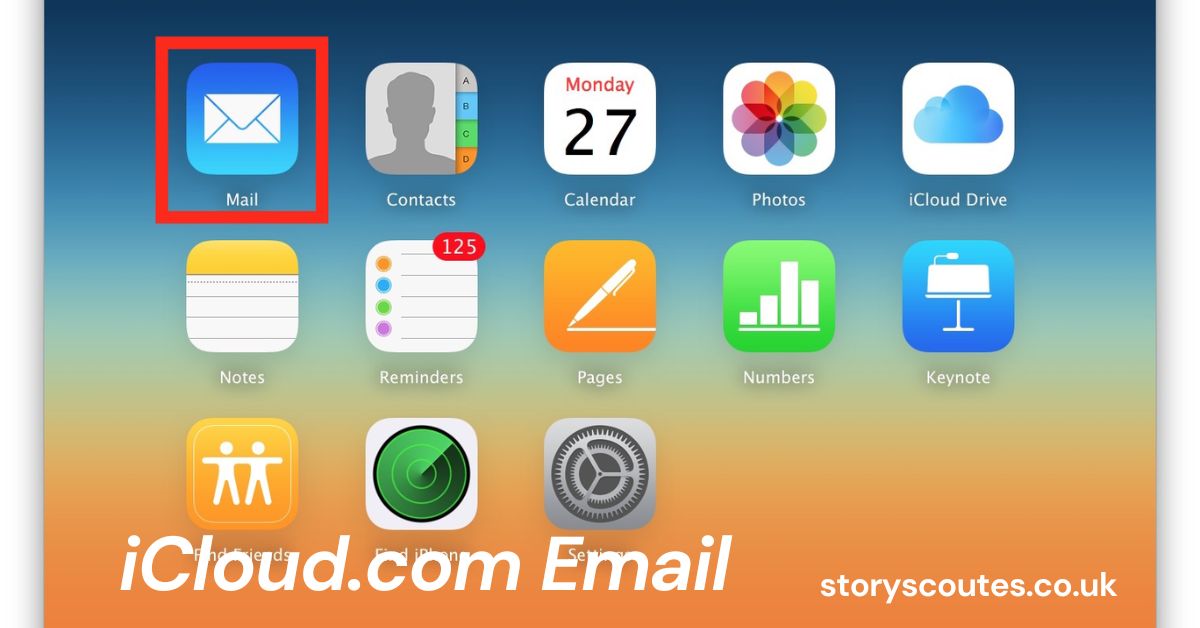iCloud.com Email: Your Ultimate Resource
In today’s digital world, email remains a vital tool for communication, both personally and professionally. One of the most popular email services is iCloud.com email, offered by Apple Inc. This service provides users with a seamless experience for managing their emails, contacts, calendars, and more, all integrated into Apple’s ecosystem. In this article, we will explore everything you need to know about iCloud.com email, its features, benefits, and how it stacks up against other email services. We aim to provide you with insightful analyses, practical tips, and answers to common questions.
What is iCloud.com Email?
iCloud.com email is an email service provided by Apple that is part of the iCloud suite of services. Launched in 2011, iCloud allows users to store and sync data across all their Apple devices, including iPhones, iPads, and Macs. The email feature is just one of many functionalities offered by iCloud, which also includes file storage, photo sharing, and calendar management.
Key Features of iCloud.com Email
- Seamless Integration: iCloud.com email integrates smoothly with Apple devices and services, making it easy to access your email from any device.
- User-Friendly Interface: The interface is clean and intuitive, allowing users to navigate through their emails easily.
- Spam Protection: Apple provides robust spam filters, ensuring that your inbox remains clutter-free.
- Advanced Security: iCloud offers end-to-end encryption and two-factor authentication, providing users with enhanced security.
- 50GB Free Storage: iCloud offers a generous amount of free storage for emails and attachments, with additional storage available for purchase.
Setting Up Your iCloud.com Email
Setting up an iCloud.com email account is simple, especially for those already in the Apple ecosystem. Here’s a step-by-step guide:
Step 1: Create an Apple ID
If you don’t have an Apple ID yet, you’ll need to create one. You can do this through the Apple website or directly on your device.
Step 2: Access iCloud Settings
Once you have your Apple ID, you can access iCloud settings on your Apple device:
- On an iPhone/iPad: Go to Settings > [Your Name] > iCloud.
- On a Mac: Open System Preferences > Apple ID > iCloud.
Step 3: Enable iCloud Mail
In the iCloud settings, toggle on the Mail option. This will create your iCloud.com email address.
Step 4: Access Your Email
You can access your iCloud.com email from any device by visiting iCloud.com and signing in with your Apple ID. Alternatively, you can set it up in the Mail app on your Apple devices or other email clients.
Benefits of Using iCloud.com Email
Using iCloud.com email comes with a range of benefits that enhance your email experience. Here are some of the standout advantages:
1. Enhanced Privacy and Security
Apple is known for its strong emphasis on privacy. With iCloud.com email, your data is protected by encryption, ensuring that your emails remain private and secure.
2. Built-in Collaboration Tools
iCloud.com email integrates with other iCloud services like Calendar and Notes, allowing for seamless collaboration. You can easily share your calendar events or notes directly from your email.
3. Accessible Anywhere
With iCloud.com email, you can access your emails from any internet-connected device, not just Apple products. This flexibility makes it convenient for users on the go.
4. Custom Email Domain
If you have a custom email domain, you can link it to your iCloud account, allowing you to send and receive emails from your personalized address.
5. Free and Paid Options
While iCloud offers a free tier, users can also opt for paid plans that provide additional storage and features, ensuring that there’s a suitable option for everyone.
iCloud.com Email Features Explained
To fully appreciate iCloud.com email, it’s essential to explore its features in more depth.
User-Friendly Interface
The iCloud.com email interface is designed with the user in mind. The layout is clean and straightforward, making it easy for users to navigate through their inbox, compose new messages, and manage their contacts. The design minimizes distractions and focuses on the essential functions, allowing users to be more productive.
Mailbox Organization
iCloud.com email allows you to organize your mailbox efficiently. Users can create folders, labels, and smart mailboxes to categorize emails based on personal preferences. For example, you can have separate folders for work-related emails, family communications, and subscriptions. This organization ensures that important messages are easy to locate.
iCloud Drive Integration
One of the standout features of iCloud.com email is its integration with iCloud Drive. This allows users to easily attach files from their iCloud Drive to emails without leaving the email interface. It’s a seamless way to share documents, presentations, and images without the hassle of downloading files to your device first.
Calendar and Contacts Integration
Another advantage of using iCloud.com email is its integration with iCloud Calendar and Contacts. You can easily access your calendar events or contact information directly from your email. For example, when receiving an invitation to a meeting, you can quickly add it to your calendar with just a few clicks.
Search Functionality
Finding specific emails can be a daunting task, especially if you receive numerous messages daily. iCloud.com email offers powerful search functionality that allows users to search for emails based on keywords, sender names, and dates. This feature helps you locate important information quickly and efficiently.
iCloud.com Email vs. Other Email Services
When comparing iCloud.com email to other email services, it’s essential to consider various factors like usability, features, and security.
iCloud.com Email vs. Gmail
- User Interface: While Gmail offers extensive features and customization, some users prefer the simplicity and cleanliness of iCloud’s interface.
- Integration: iCloud excels in integration with Apple devices, while Gmail is designed for cross-platform use. Gmail integrates well with Google’s ecosystem of services, including Google Drive and Google Calendar, making it more versatile for users who rely on these tools.
iCloud.com Email vs. Outlook
- Email Organization: Outlook offers advanced organizational tools, while iCloud.com email focuses on a straightforward experience. Outlook has features like focused inboxes and rules for automated email sorting, which can benefit users with high email volumes.
- Storage Options: iCloud provides 5GB of free storage for all iCloud services, while Outlook’s free tier is limited, encouraging users to upgrade for more storage. Outlook also provides a business-oriented email experience with Exchange.
iCloud.com Email vs. Yahoo Mail
- Security: iCloud offers superior security features, including end-to-end encryption and two-factor authentication, to keep your data safe. Yahoo has faced security breaches in the past, which raises concerns about its safety.
- Usability: iCloud’s clean interface is more user-friendly than Yahoo’s, which can be cluttered. Yahoo has made efforts to improve its interface, but some users still find it overwhelming.
Tips for Maximizing Your iCloud.com Email Experience
To make the most out of your iCloud.com email experience, consider the following tips:
1. Organize Your Inbox
Utilize folders and labels to keep your inbox organized. This makes it easier to find important emails later. Regularly review your folders and delete unnecessary emails to maintain a clean inbox.
2. Use Filters
Set up filters to automatically sort incoming emails based on criteria like sender or subject. This can help you manage your emails more efficiently. For example, create a filter to direct newsletters to a specific folder, reducing inbox clutter.
3. Enable Notifications
Turn on notifications for your email to stay updated on new messages without needing to check constantly. Customize notifications to alert you only for important emails, allowing for a more focused experience.
4. Regularly Clean Up
Take time to delete unnecessary emails and spam to keep your inbox clutter-free. Consider scheduling regular email clean-up sessions to stay organized.
5. Keep Software Updated
Always ensure your Apple devices are updated to the latest software version to benefit from new features and security enhancements. Regular updates also improve compatibility with iCloud services.
Troubleshooting Common iCloud.com Email Issues
Even the best email services can encounter issues. Here are some common problems users face with iCloud.com email and how to troubleshoot them:
1. Trouble Logging In
If you can’t log in, ensure you’re using the correct Apple ID and password. If you’ve forgotten your password, use the Apple ID recovery options. Also, check if your account is locked due to multiple failed login attempts.
2. Email Not Syncing
If your email isn’t syncing, check your internet connection. You can also try signing out of your iCloud account and signing back in. Restarting your device can also resolve syncing issues.
3. Spam Filtering Issues
If spam is getting through, adjust your spam settings in the Mail app or iCloud settings. Report spam emails to improve future filtering. Regularly check your spam folder to ensure legitimate emails haven’t been mistakenly marked as spam.
4. Attachment Size Limit
iCloud email has an attachment size limit of 20MB. If you’re trying to send larger files, consider using iCloud Drive to share links instead. This is especially useful for sending large documents or media files.
Conclusion
iCloud.com email is a powerful tool for anyone within the Apple ecosystem, offering seamless integration, user-friendly features, and robust security. Whether you’re an individual looking for a reliable email service or a professional managing multiple communications, iCloud.com email can meet your needs effectively. By understanding its features, benefits, and best practices, you can maximize your email experience and enhance your productivity.
If you have further questions or need additional information, feel free to reach out. Happy emailing!
FAQs
Is iCloud.com email free?
Yes, iCloud.com email is free with an Apple ID. Users receive 5GB of free storage, with additional storage available for purchase.
How do I access my iCloud.com email?
You can access your iCloud.com email by visiting iCloud.com and signing in with your Apple ID, or through the Mail app on Apple devices.
Can I use iCloud.com email with non-Apple devices?
Yes, you can access your iCloud.com email from any web browser on non-Apple devices by logging into iCloud.com.
What should I do if I forget my Apple ID password?
You can reset your password using the Apple ID recovery options available on the login page.
How much storage do I get with iCloud.com email?
You receive 5GB of free storage across all iCloud services, including email. You can upgrade to higher storage plans if needed.






